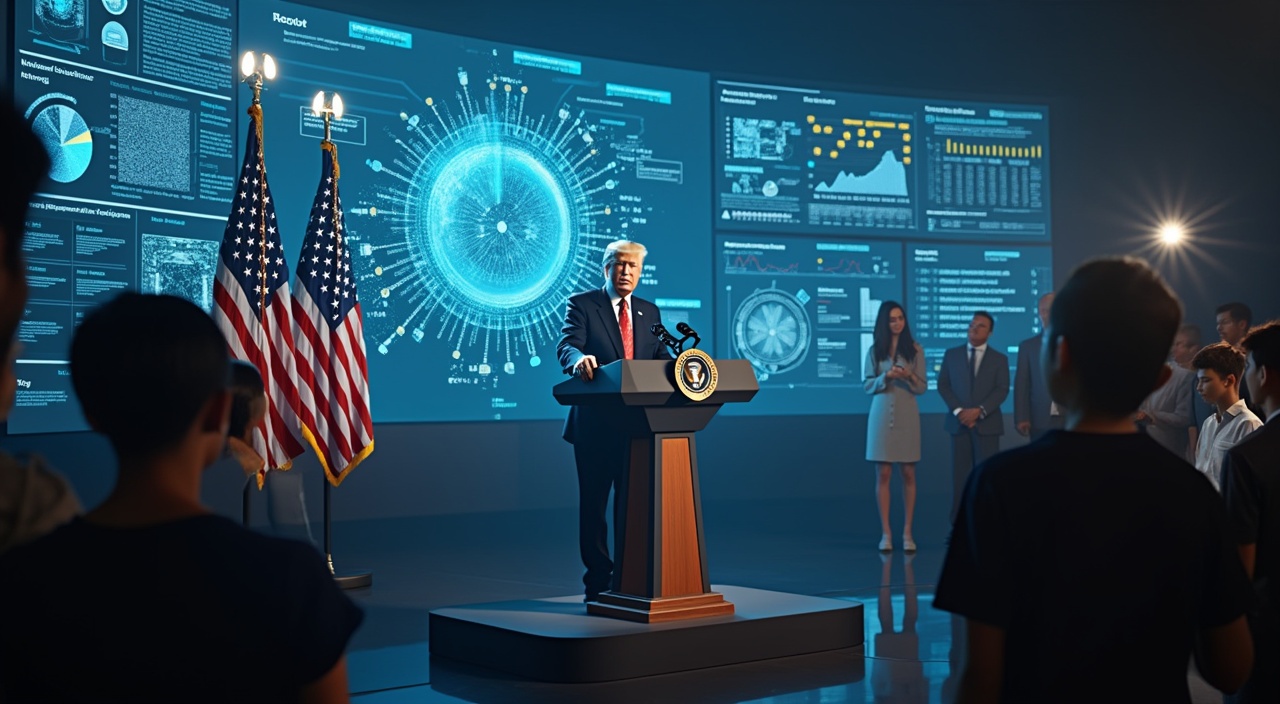AI chatbots are rapidly transforming education from standardized teaching to personalized learning experiences. These digital tutors aren’t just fancy tech tools—they’re potential game-changers that could close critical educational inequality gaps across diverse student populations.
Key Takeaways:
- AI chatbots provide 24/7 personalized learning support, adapting to individual student learning styles and knowledge gaps
- The Presidential AI Challenge is investing $10,000 per scholarship to promote AI literacy and student innovation
- Ethical implementation requires strong data protection, algorithmic bias monitoring, and comprehensive teacher training
- Personalized AI learning tools can help level educational playing fields, especially for students in underserved communities
- Success depends on viewing AI as an educational partner, not a replacement for human instruction
I’ve seen firsthand how these AI tutoring systems can transform a struggling student’s performance almost overnight. Their ability to adapt to each learner’s pace makes them incredibly valuable for addressing educational disparities.
The impact goes far beyond simple homework help. These AI systems identify specific knowledge gaps and learning patterns that might take human teachers weeks or months to recognize. This targeted approach means students receive exactly the support they need when they need it.
Recently, Melania Trump launched an AI challenge for students aimed at building AI literacy across American schools. The initiative offers significant scholarships and has sparked interest in how AI might reshape education.
But there’s a catch: implementing these systems requires careful planning. Schools need proper infrastructure, teacher training, and thoughtful integration with existing curricula. My experience with AI automation for small businesses shows that preparation is essential for successful technology adoption.
Data privacy remains a critical concern. Schools must ensure student information stays protected while still gathering enough data for the AI to function effectively. This balancing act demands careful oversight and clear policies.
The good news? When implemented properly, these systems can dramatically reduce educational inequality. Students who previously couldn’t afford private tutoring now have 24/7 access to personalized learning assistance. Those in remote areas gain access to educational resources previously unavailable to them.
Picture this: a student struggling with algebra receives instant, judgment-free help exactly when they hit a roadblock, rather than waiting until the next class period when they’ve already fallen behind. This immediate feedback loop accelerates learning dramatically.
For educators concerned about AI replacing human teachers, I’ve found the opposite is true. As I discuss in my article on how AI is changing our relationship with technology, these tools free teachers from repetitive tasks so they can focus on what they do best—providing human connection, motivation, and complex guidance.
The Presidential AI Challenge guidebook outlines how schools can start implementing AI literacy programs. Many districts are finding these resources invaluable for planning their AI integration strategies.
Looking ahead, the true potential lies in AI’s ability to make education more equitable. By providing personalized support to every student regardless of background, these systems could help close achievement gaps that have persisted for generations.
Real-World Impact
Strange but true: some of the most promising results are coming from schools in underserved areas, where the personalized attention from AI tutors is making the biggest difference. This pattern suggests AI could become a powerful tool for educational equity.
For school administrators interested in exploring AI integration, I recommend starting with a small pilot program focused on a specific subject area. This approach allows you to gather data on effectiveness while working through implementation challenges on a manageable scale.
Let that sink in. We’re potentially witnessing the beginning of an educational revolution—one that could finally deliver on the promise of truly personalized learning for every student.
To learn more about how AI is reshaping various industries and creating new opportunities, check out my article on the AI Revolution and its impact on entrepreneurs.
The Broken Education System: Why We Need a Technological Lifeline
The numbers don’t lie about our education crisis. Students across America face vastly different learning experiences based on their zip code. Rural schools lack STEM teachers. Urban districts struggle with overcrowded classrooms. Suburban schools hoard resources while inner-city kids get the leftovers.
I’ve seen this firsthand through my work with various educational initiatives. The disparity is shocking. One district has state-of-the-art labs. The next county over can’t afford basic science equipment. High schoolers aren’t misusing AI – they’re reinventing education because they recognize these gaps better than most adults.
STEM engagement has plummeted. Students find traditional math and science instruction boring. They disconnect from abstract concepts that lack real-world relevance. Teachers burn out trying to reach disengaged kids with outdated methods.
The skills gap widens daily. Employers need workers who understand technology, data analysis, and problem-solving. Our schools still teach like it’s 1995. AI automation revolutionizes small business, yet most graduates can’t even write a basic prompt.
Strange but true: kids learn more from YouTube than their textbooks. They crave interactive, personalized instruction. Traditional one-size-fits-all teaching fails them spectacularly.
Recent initiatives recognize this problem. But recognition isn’t enough. We need solutions that meet students where they are.
The question isn’t whether our education system needs help. It’s whether AI chatbots can provide the personalized, engaging instruction our kids desperately need.
The Presidential AI Challenge: A National Innovation Blueprint
Picture this: America’s classrooms getting a $10,000 injection of innovation motivation. That’s exactly what happened when Executive Order 14277 launched the Presidential AI Challenge in 2025.
First Lady’s Tech Vision Takes Center Stage
First Lady Melania Trump spearheaded this initiative, transforming what could’ve been another bureaucratic program into something students actually want to participate in. Smart move, considering most government education programs collect dust faster than my old physics textbooks.
The challenge isn’t just throwing money at problems. It’s building AI literacy from kindergarten through high school. High schoolers aren’t misusing AI – they’re reinventing education, and this program recognizes that reality.
Public-Private Power Play
Over 100 partnerships back this effort. That’s not government wishful thinking—that’s corporate America betting real money on student innovation. Each scholarship maxes out at $10,000, proving we’re serious about nurturing the next generation of AI creators, not just consumers.

Personalized Learning: How AI Chatbots Transform Student Experiences
Machine learning algorithms don’t just process data—they study your students like a dedicated tutor who never sleeps. These systems adapt to individual learning styles, tracking how each student absorbs information and adjusting their approach accordingly. Strange but true: some chatbots now recognize when a visual learner struggles with text-heavy content and automatically switch to diagrams or interactive elements.
Real-time feedback transforms the traditional classroom dynamic completely. Students receive immediate responses to their questions, eliminating the frustration of waiting days for graded assignments or office hours. Interactive educational experiences keep engagement levels high while automated assessment tools provide instant insights into knowledge gaps.
The 24/7 Digital Advantage
Digital tutoring capabilities operate around the clock, something no human educator can match. Students studying at 2 AM get the same quality assistance as those working during regular hours. This accessibility proves particularly valuable for non-traditional learners juggling work and family responsibilities.
Automated systems recommend personalized resources based on performance patterns, creating custom learning paths for each student. AI agents won’t replace traditional teaching methods, but they’re revolutionizing how we approach individual student needs.
Measurable Results Drive Adoption
Pilot studies show promising learning gains when chatbots supplement traditional instruction. However, the technology works best as an educational partner rather than a replacement. High schoolers aren’t misusing AI—they’re reinventing education by integrating these tools strategically.
The question isn’t whether AI chatbots help students learn—it’s how effectively schools implement them alongside human instruction.

Privacy, Ethics, and Responsible AI Implementation
Schools can’t just throw AI chatbots at students and hope for the best. I’ve seen too many districts rush into technology without considering the consequences.
Data protection sits at the foundation of any successful AI education program. Schools must establish frameworks that comply with FERPA requirements while protecting student information from unauthorized access or misuse.
Algorithmic bias poses another serious challenge. AI systems can perpetuate existing educational inequalities if not properly monitored. Schools need regular audits to ensure their chatbots provide fair, accurate responses to all students regardless of background.
Professional development becomes critical here. Educators need training on both the technical aspects of AI tools and the ethical considerations surrounding their use. Students aren’t misusing AI – they’re adapting faster than their teachers.
The solution? Start with clear policies, invest in teacher training, and maintain transparency about how these systems work and what data they collect.

Bridging Opportunity Gaps: AI as an Educational Equalizer
AI chatbots could fundamentally reshape how we address educational inequality. I’ve witnessed firsthand how technology can level playing fields—just like when I moved from Germany to the U.S. and had to rebuild my career from scratch.
Picture this: a rural high school student in Ohio gets the same quality tutoring as someone at an elite prep school. The White House Presidential AI Challenge is making this vision real. First Lady Melania Trump’s task force is actively working to expand AI access across underserved communities.
Strange but true: the same technology threatening to replace jobs might create more opportunities than it destroys. When students learn to work alongside AI early, they develop skills that traditional education often misses. AI Agents Won’t Replace You—But They Might Change What It Means to Be You.
Real-World Impact on Communities
Educational technology isn’t just about fancy gadgets. Here’s what changes when schools get proper AI support:
- Personalized learning paths that adapt to each student’s pace
- 24/7 homework help that doesn’t require expensive tutors
- Language translation for immigrant students
- Career counseling based on local job market data
The Ohio Department of Education reports that students participating in AI challenges show improved problem-solving skills. But here’s the twist: success depends on teacher training and infrastructure investment.
Digital babysitters? Maybe. Educational lifelines? Absolutely—if we implement them correctly. Transform Your Appointment-Based Business with AI: A Comprehensive Guide shows how smart implementation makes all the difference.
The Future of Learning: Challenges and Transformative Potential
The education sector stands at a crossroads where AI chatbots promise revolutionary change, yet skeptics wonder if we’re trading genuine learning for digital convenience. I’ve witnessed this tension firsthand while consulting with educational institutions grappling with AI integration.
Balancing Innovation with Human Connection
The most successful AI implementations I’ve observed maintain strong human oversight. Teachers aren’t being replaced—they’re becoming learning orchestrators who guide students through AI-assisted discovery. The Presidential AI Challenge Guidebook emphasizes this hybrid approach, recognizing that technology amplifies rather than substitutes human wisdom.
Addressing Current Limitations
Here’s what needs immediate attention for AI chatbots to truly serve education:
- Continuous accuracy monitoring to prevent misinformation spread
- Cultural sensitivity training to ensure diverse student needs are met
- Privacy protection protocols that exceed current standards
- Teacher training programs that build confidence, not fear
The National Science Foundation’s K-12 AI initiatives highlight these concerns while funding solutions.
Strange but true: the biggest challenge isn’t technical—it’s psychological. Students adapt faster than educators, creating a knowledge gap that threatens implementation success.
AI Agents Won’t Replace You—But They Might Change What It Means to Be You explores this adaptation phenomenon in depth.
The vision ahead involves personalized learning pathways that evolve with each student. However, this requires sustained investment in both technology and human capital development. Without this balance, we risk creating digital babysitters instead of educational partners.
Sources:
• EdWeek: Melania Trump Issues an AI Challenge for Students: Will It Help Build AI Literacy?
• White House: Presidential AI Challenge Guidebook for Participation
• Microsoft Blog: New White House Commitments
• White House Briefings: First Lady Melania Trump Hosts a Meeting of the White House Task Force on Artificial Intelligence Education
• Ohio Education: Presidential AI Challenge Fosters AI Creativity
• NSF Funding Opportunity: Supplemental Funding Requests to Support K-12 Artificial Intelligence Education








